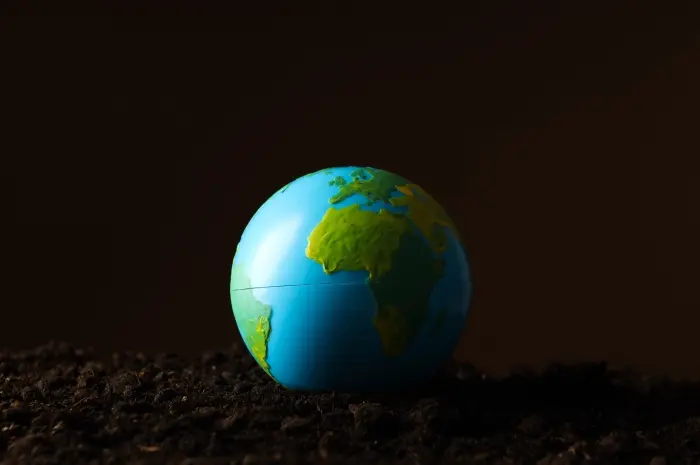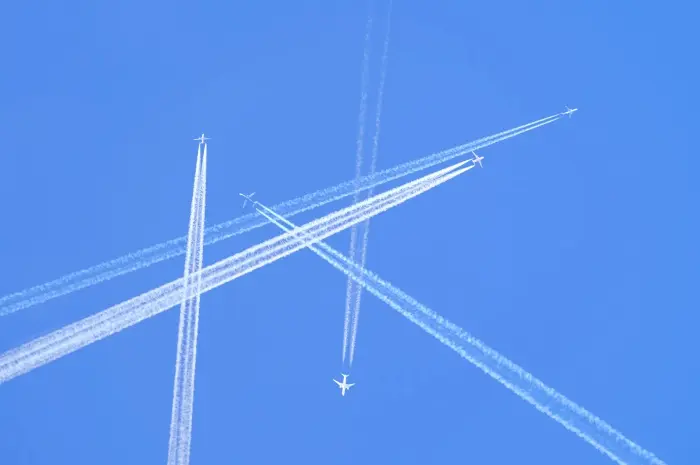Have you ever looked up at the sky and noticed those long, white trails following airplanes? Known as contrails, these white streaks have sparked curiosity and fascination among sky gazers for decades.
Some see them as mere byproducts of flight, while others speculate about their environmental impact or even suggest they have more mysterious origins.
The truth behind those white trails left by airplanes is both scientifically intriguing and essential for understanding modern aviation and its effects on our atmosphere.
The Truth Behind Those White Trails Left by Airplanes
Contrails, short for condensation trails, form under specific atmospheric conditions when hot, humid air from aircraft engines mixes with the cooler, low-pressure air at high altitudes.
This mixing results in the formation of ice crystals or water droplets that appear as white trails behind the aircraft.
But there’s more to these trails than meets the eye. They can tell us a lot about the weather, the environment, and even the technologies used in aviation today.
Let’s delve into the science and significance behind these fascinating phenomena.
How Contrails Form
Contrails are formed primarily due to the combination of hot exhaust from aircraft engines and the cold, low-pressure atmosphere at cruising altitudes.
When an airplane flies, its engines produce hot gases, including water vapor and carbon dioxide. As these gases exit the engines, they mix with the surrounding cold air.
If the air is cold enough, typically below -40 degrees Fahrenheit, and if there is enough humidity, the water vapor condenses into tiny ice crystals, creating the white trails left by airplanes.
These ice crystals can persist and spread out, depending on the atmospheric conditions.
Types of Contrails
There are generally three types of contrails: short-lived, persistent, and spreading. Short-lived contrails disappear quickly and usually indicate lower humidity levels at high altitudes.
Persistent contrails last longer and can remain visible for hours, often spreading out to form thin, cirrus-like clouds.
Spreading contrails can significantly impact local climate by trapping heat and reflecting sunlight.
Understanding the differences between these types can provide insight into atmospheric conditions and the potential environmental effects of air travel.
Environmental Impact

The white trails left by airplanes have a notable impact on the environment.
While contrails themselves are primarily composed of ice crystals, they can contribute to the formation of cirrus clouds, which have both warming and cooling effects on the Earth’s surface.
These clouds trap heat radiating from the Earth, contributing to the greenhouse effect, but they can also reflect some of the sun’s energy back into space.
Research is ongoing to determine the overall impact of contrails on global climate, but it is clear that they play a role in atmospheric processes and need to be considered in discussions about aviation’s environmental footprint.
Debunking Myths
Contrails have been the subject of numerous conspiracy theories, with some people believing that they contain harmful chemicals deliberately released into the atmosphere.
However, scientific evidence supports the explanation that contrails are simply the result of the interaction between aircraft exhaust and atmospheric conditions.
The white trails left by airplanes are natural phenomena, not evidence of secret government programs or weather manipulation.
It’s important to rely on scientific understanding to dispel myths and appreciate the true nature of these intriguing sky patterns.
Conclusion
The truth behind those white trails left by airplanes lies in the science of aviation and atmospheric chemistry.
These contrails are a fascinating byproduct of modern flight, formed by the interaction of hot engine exhaust with cold, humid air at high altitudes.
While they can impact the environment by contributing to cloud formation, they are not the mysterious or harmful phenomena some believe them to be.
By understanding the science behind contrails, we can better appreciate the complexities of our atmosphere and the technological marvels of aviation.







